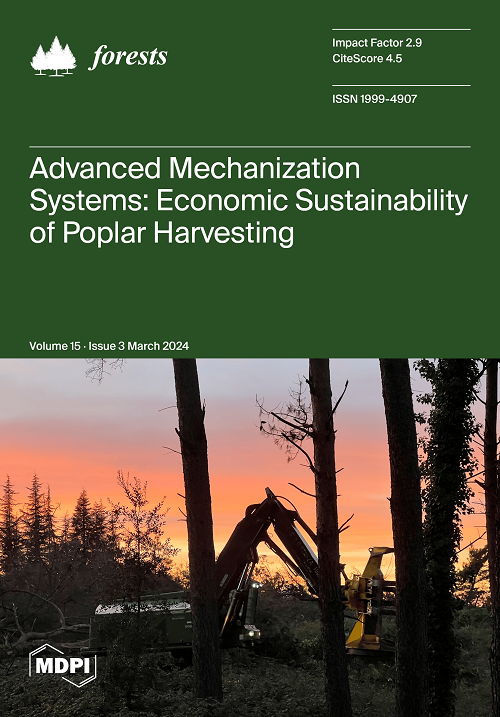The Complete Plastid Genome Sequences of the Belian (Eusideroxylon zwageri): Comparative Analysis and Phylogenetic Relationships with Other Magnoliids
IF 2.5
2区 农林科学
Q1 FORESTRY
引用次数: 0
Abstract
The Belian (Eusideroxylon zwageri Teijsm. & Binn.) is a commercially important timber species in Southeast Asia that was listed on the IUCN Red List of threatened species in 1998. Six years ago, we published an article in Genome Biology Ecology entitled “Evolutionary Comparisons of the Chloroplast Genome in Lauraceae and Insights into Loss Events in the Magnoliids” in which one complete plastid genome of Belian was assembled for comparative analyses of the plastomes in Lauraceae. However, a recent study concluded that our sequenced Belian individual can be located in the clade of Myristicaceae instead of that of Lauraceae. Here, we performed reanalyses of an additional two Belian plastomes, along with 42 plastomes from plants spanning 10 families of the Magnoliids. The three Belian plastomes are 39% CG and vary in length from 157,535 to 157,577 bp. A total of 37 tRNA genes, 8 rRNA genes, and 85 protein-coding genes were among the 130 annotated genes. There were 95–101 repeat sequences and 56–61 simple repeat sequences (SSRs). Comparative genomic analysis revealed 170 mutation sites in their plastomes, which include 111 substitutions, 53 indels, and 6 microinversions. Phylogeny was reconstructed using maximum-likelihood and Bayesian approaches for 44 magnoliids species, indicating that the 3 Belian individuals were nested among the species in the Lauraceae family rather than Myristicaceae.贝利亚木(Eusideroxylon zwageri)的完整质粒基因组序列:与其他木兰科植物的比较分析和系统发育关系
贝里棕(Eusideroxylon zwageri Teijsm. & Binn.)是东南亚的一种重要商业用材树种,1998年被列入世界自然保护联盟(IUCN)濒危物种红色名录。六年前,我们在《基因组生物学生态学》(Genome Biology Ecology)杂志上发表了一篇题为《月桂科植物叶绿体基因组的进化比较和木兰科植物损失事件的启示》(Evolutionary Comparisons of the Chloroplast Genome in Lauraceae and Insights into Loss Events in the Magnoliids)的文章,其中组装了贝利安的一个完整的质体基因组,用于月桂科植物质体的比较分析。然而,最近的一项研究认为,我们测序的贝利安个体可以归入肉豆蔻科而非月桂科。在此,我们对另外两个贝里安植物质粒以及来自木兰科 10 个科的 42 个植物质粒进行了重新分析。这三个贝利亚植物质粒的 CG 含量为 39%,长度从 157,535 到 157,577 bp 不等。在 130 个注释基因中,共有 37 个 tRNA 基因、8 个 rRNA 基因和 85 个蛋白质编码基因。有 95-101 个重复序列和 56-61 个简单重复序列(SSR)。比较基因组分析显示,它们的质粒中有 170 个突变位点,其中包括 111 个置换位点、53 个嵌合位点和 6 个微变位点。利用最大似然法和贝叶斯法重建了44种木兰科植物的系统发育,结果表明这3个贝里安个体嵌套在月桂科而不是肉豆蔻科的物种中。
本文章由计算机程序翻译,如有差异,请以英文原文为准。
求助全文
约1分钟内获得全文
求助全文
来源期刊

Forests
FORESTRY-
CiteScore
4.40
自引率
17.20%
发文量
1823
审稿时长
19.02 days
期刊介绍:
Forests (ISSN 1999-4907) is an international and cross-disciplinary scholarly journal of forestry and forest ecology. It publishes research papers, short communications and review papers. There is no restriction on the length of the papers. Our aim is to encourage scientists to publish their experimental and theoretical research in as much detail as possible. Full experimental and/or methodical details must be provided for research articles.
 求助内容:
求助内容: 应助结果提醒方式:
应助结果提醒方式:


